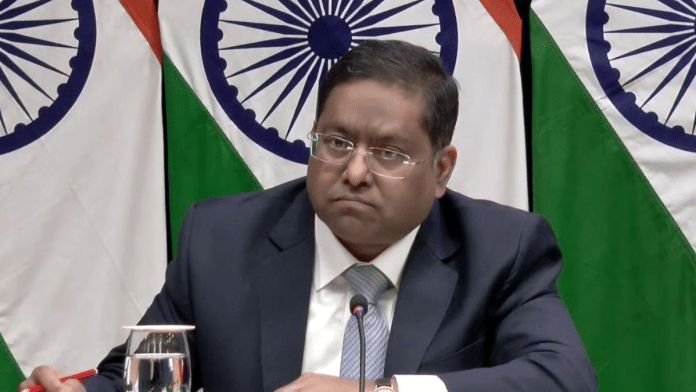New Delhi: India Friday distanced itself from the Chinese statement, which claimed that Indian National Security Adviser Ajit Doval and Chinese foreign minister Wang Yi reached a six-point consensus and committed to a ‘package’ deal on the boundary question at Wednesday’s meeting of special representatives.
Published Wednesday night, the Chinese statement referred to the 2005 agreement and the political parameters and guiding principles for the settlement of border issues in that deal, which, among other things, bifurcates the boundary issue from the “overall development of bilateral relations”. This last part has been the position advocated by the Chinese foreign ministry for the past few months.
The Indian statement, however, asserted that border ties are the cornerstone for determining the overall ties between the two countries. Furthermore, it makes no mention of a “six-point consensus”.
“We put out the details of issues discussed in our press release. The two sides have reaffirmed their commitment to exploring a fair, reasonable and mutually acceptable framework for the settlement of the boundary question in accordance with the political parameters and guiding principles agreed in 2005,” Ministry of External Affairs (MEA) spokesperson Randhir Jaiswal said in response to a question from ThePrint, during the regular media briefing.
When pressed again by another journalist on the separate readouts from the special representatives (SR) meeting, Jaiswal said, “What happened in the SR-level talks, we have clearly defined in our press release. I request you to please refer to our press release. If you have any questions about the other press release, you should take it with the other party.”
The MEA spokesperson, while distancing from the six-point consensus, indicated that the sum and substance of what was agreed on is present in the Indian statement.
In 2005, India and China agreed to the political parameters and guiding principles for the settlement of the boundary question, with both sides coming to an agreement via a “package settlement” that would cover all areas of the boundary between the two neighbours. The Chinese readout published Wednesday mentioned the commitment to arriving at a “package settlement” but not the Indian readout.
Article I of the 2005 agreement says, “The differences on the boundary question should not be allowed to affect the overall development of bilateral relations. The two sides will resolve the boundary question through peaceful and friendly consultations,” which mirrors Beijing’s demands for resumption of bilateral ties and placing the boundary tensions at its “appropriate place”.
The meeting between Doval and Wang was the first between the two in the special representatives’ format since 2019 and following the clashes at Galwan in the summer of 2020. The clashes led to the two sides escalating their military presence in the region, with the bilateral relationship affected in the process.
The Kailash Mansarovar yatra, suspended since 2020 due to COVID-19, has not been resumed yet. However, according to the MEA, both special representatives gave a “positive direction” towards the resumption of the yatra.
China has been pressing India to allow direct flights between the two countries and issue visas to Chinese nationals — both of which have been affected since the clashes at Galwan.
Jaiswal clarified that it is a “step-by-step” process before all parts of the relationship get restored. The political processes of normalisation between the two Asian neighbours began after an agreement was reached on 21 October 2024 to disengage at the friction points in Eastern and Southern Ladakh.
Subsequently, Prime Minister Narendra Modi and Chinese President Xi Jinping held a bilateral meeting on the margins of the BRICS summit in the Russian city of Kazan on 23 October 2024.
(Edited by Madhurita Goswami)
Also Read: India, China ‘underline’ importance of maintaining peace and tranquility on border






